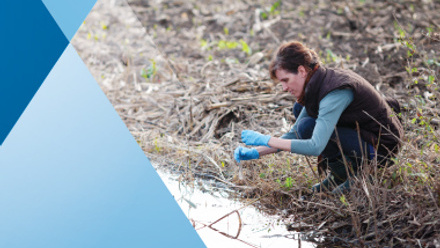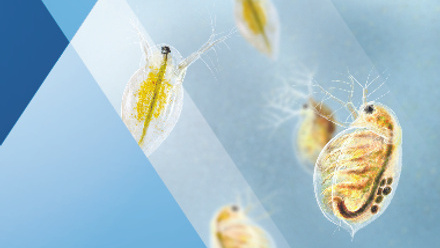Daphnia: The Good, the Bad and the New
Katie Reilly, University of Birmingham; Susana Loureiro, University of Aveiro; Maria Luisa Fernandez-Cruz, National Institute for Agricultural and Food Research and Technology (INIA)
“Daphnia: The brilliant, beautiful and broadminded” would be a good summary for the research presented at SETAC Dublin in the Daphnia session. The focus of the session was to highlight the use of Daphnia, commonly known as water fleas, as a model organism in various fields of environmental research, and to enable an interdisciplinary summary of the research and developments within this field. The use of Daphnia as a model has been historically well established, and they have long been used in regulatory testing of chemicals. With new contaminants and approaches, come the opportunities to develop and expand the work within this field and push the frontiers of their applications. Within the session, platform presentations spanned topics including imaging methods and high throughput developments; population dynamic modeling following pesticide exposure; development of Daphnia as a model for human health risk; daphnids’ response to pollutants; and the application of Omics approaches to explore a wide range of toxicants…and that is just a drop in the Daphnia pool of research presented!
Posters covered a wide range of topics and toxicants, including pesticides, pharmaceuticals, metals, microplastics, UV filters and atmospheric particulate matter. In addition to ecotoxicity presentations, there was research on evolution and adaption, including using resurrected Daphnia to explore the response to historical and emerging contaminants and the potential for remediation application. The effect of multiple stressors was also explored through mixture toxicity exposures and also through environmental parameters such as climate change or exposure to artificial light. Sublethal responses included gene regulation to detoxify arsenic, epigenetic responses to biodegradable plastics and behavioral changes such as variation in swimming behavior. High throughput methods were also presented, including automated neonate counting and sizing, and computer classification techniques for gene selection in toxico-genomics. By weaving the various strands of Daphnia-based research together into one session, we took a wide angled perspective on the future directions of Daphnia research and highlighted potential experimental or analysis ideas.
The interdisciplinary nature of the presentations highlighted the utility of Daphnia in addressing the increasing and emerging environmental concerns. And if this, and the Daphnia Dating science slam entry, hasn’t convinced you of the depth of the potential of Daphnia as a model organism, watch this space for more Daphnia content and events in SETAC Seville 2024, more information to follow!
Daphnia is the queen of freshwater ecotoxicity, and it is still not time to resign!
Author's contact: [email protected]





